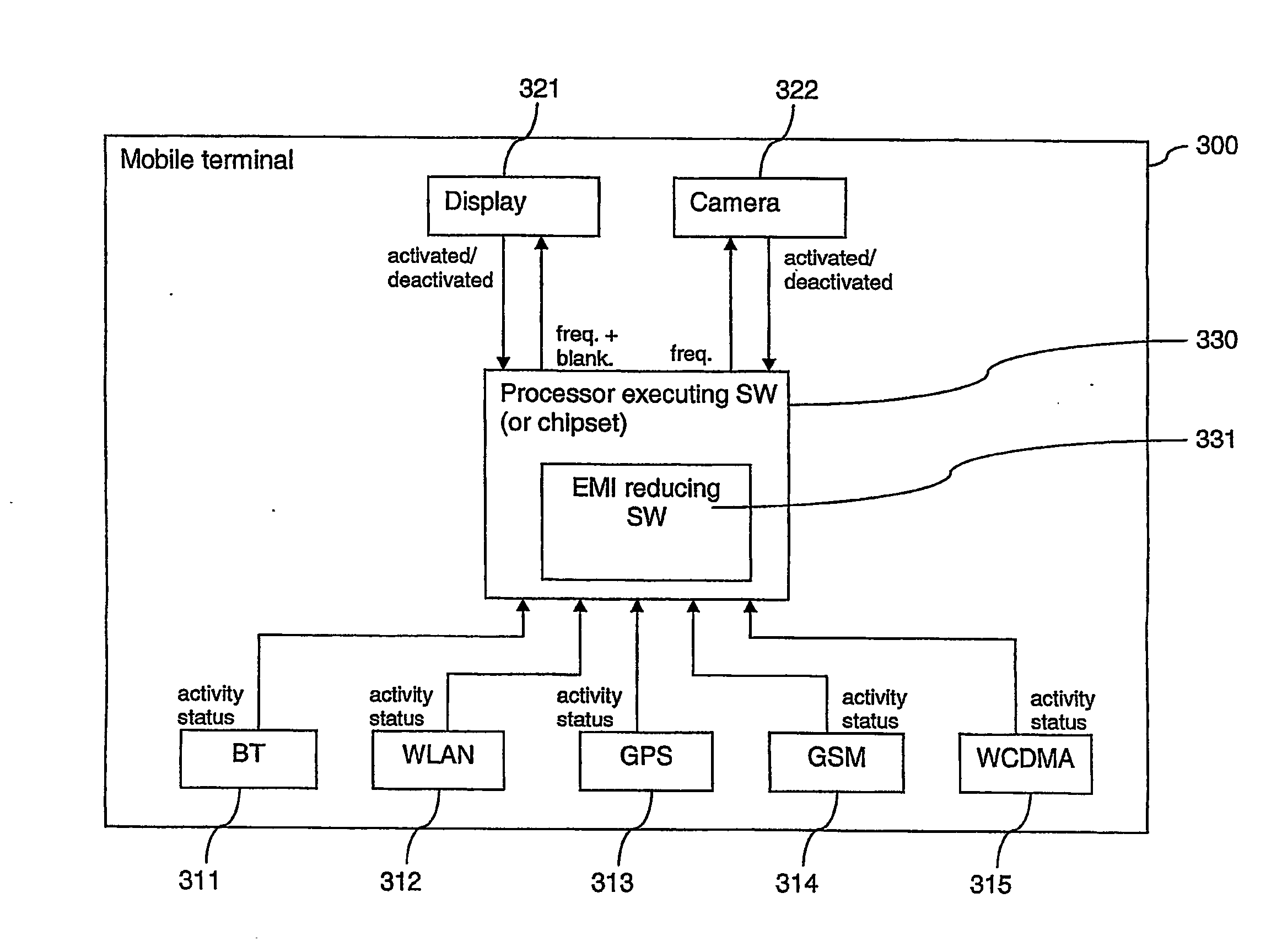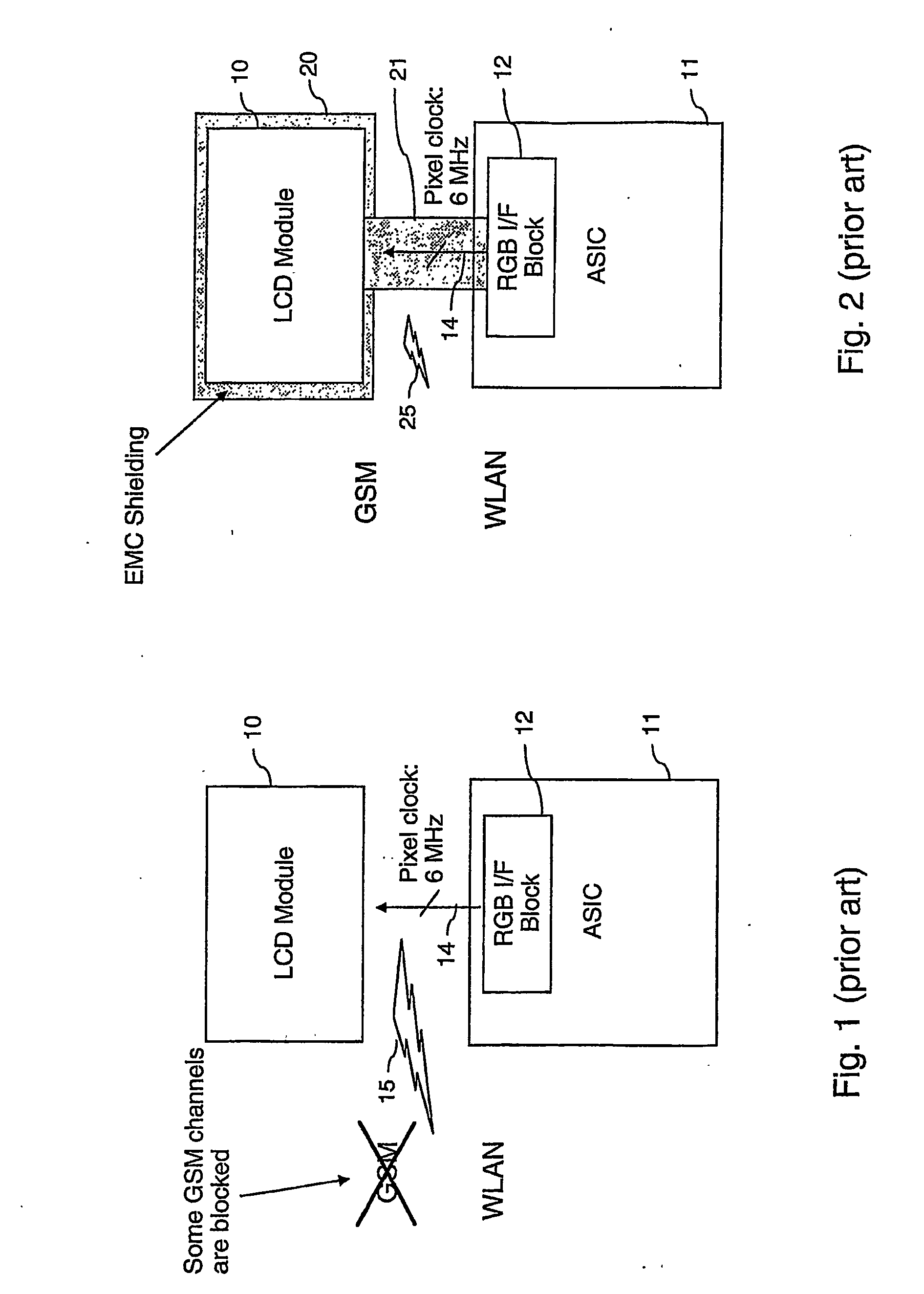Reducing electromagnetic interferences
a technology of electromagnetic interference and electronic devices, applied in the direction of transmission, transmission monitoring, electrical apparatus, etc., can solve the problems of spurious emissions, radio systems are becoming more and more sensitive to spurious emissions, and components of the same device may be sensitive to electromagnetic interference, etc., to achieve the effect of reducing electromagnetic interference in selected frequency bands, simple and flexibl
- Summary
- Abstract
- Description
- Claims
- Application Information
AI Technical Summary
Benefits of technology
Problems solved by technology
Method used
Image
Examples
Embodiment Construction
[0039]FIG. 3 is a schematic block diagram of an exemplary electronic device, which enables a protection of components from electromagnetic interferences in accordance with an embodiment of the invention.
[0040] The electronic device is a mobile terminal 300. It comprises a first group of components for a respective radio system, including a Bluetooth™ (BT) component 311, a WLAN component 312, a GPS component 313, a GSM component 314 and a WCDMA component 315. All components of the first group operate in known frequency ranges, including for example a respective baseband frequency range, a respective intermediate frequency range and a respective radio frequency range. Further, the mobile terminal 300 comprises a second group of components including a display 321 and a camera module 322. The second group of components makes use of a respective clock signal for synchronizing the component internal operations. The clock signals are provided by a respective clock signal generator. The fr...
PUM
 Login to View More
Login to View More Abstract
Description
Claims
Application Information
 Login to View More
Login to View More - R&D
- Intellectual Property
- Life Sciences
- Materials
- Tech Scout
- Unparalleled Data Quality
- Higher Quality Content
- 60% Fewer Hallucinations
Browse by: Latest US Patents, China's latest patents, Technical Efficacy Thesaurus, Application Domain, Technology Topic, Popular Technical Reports.
© 2025 PatSnap. All rights reserved.Legal|Privacy policy|Modern Slavery Act Transparency Statement|Sitemap|About US| Contact US: help@patsnap.com



